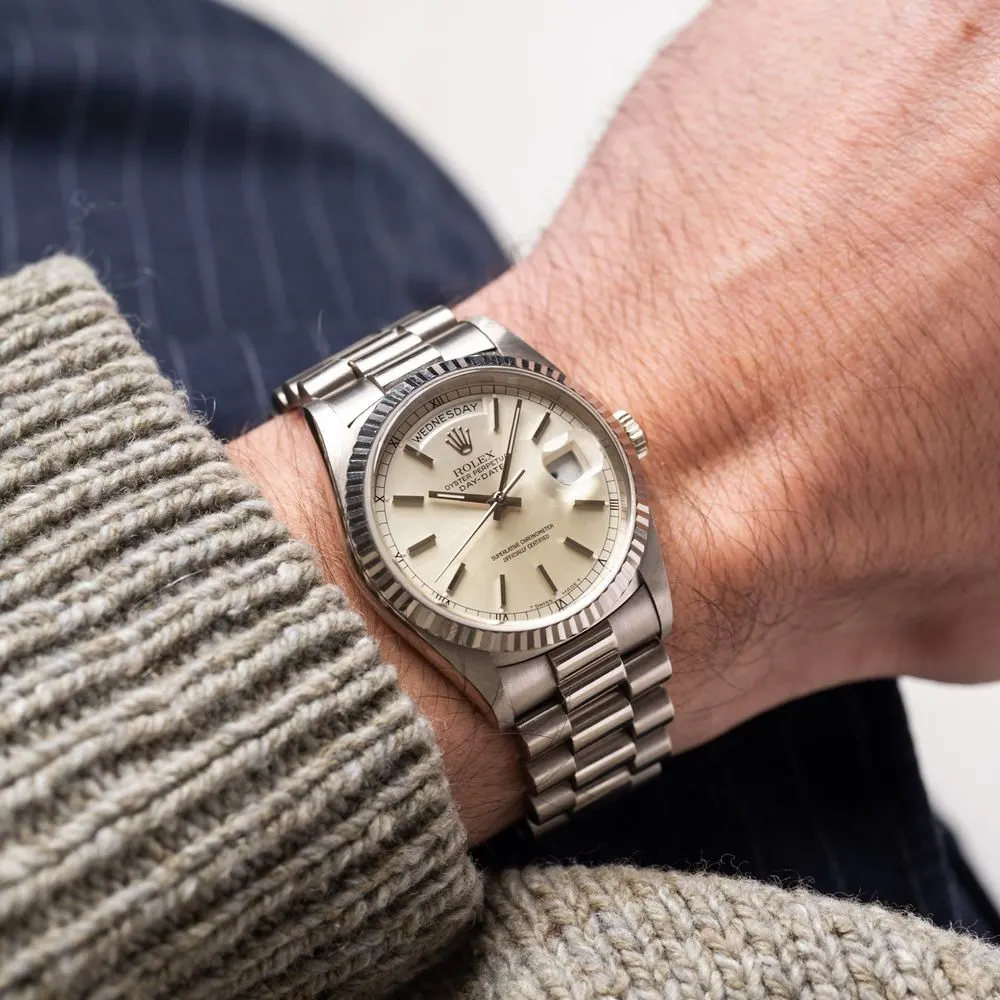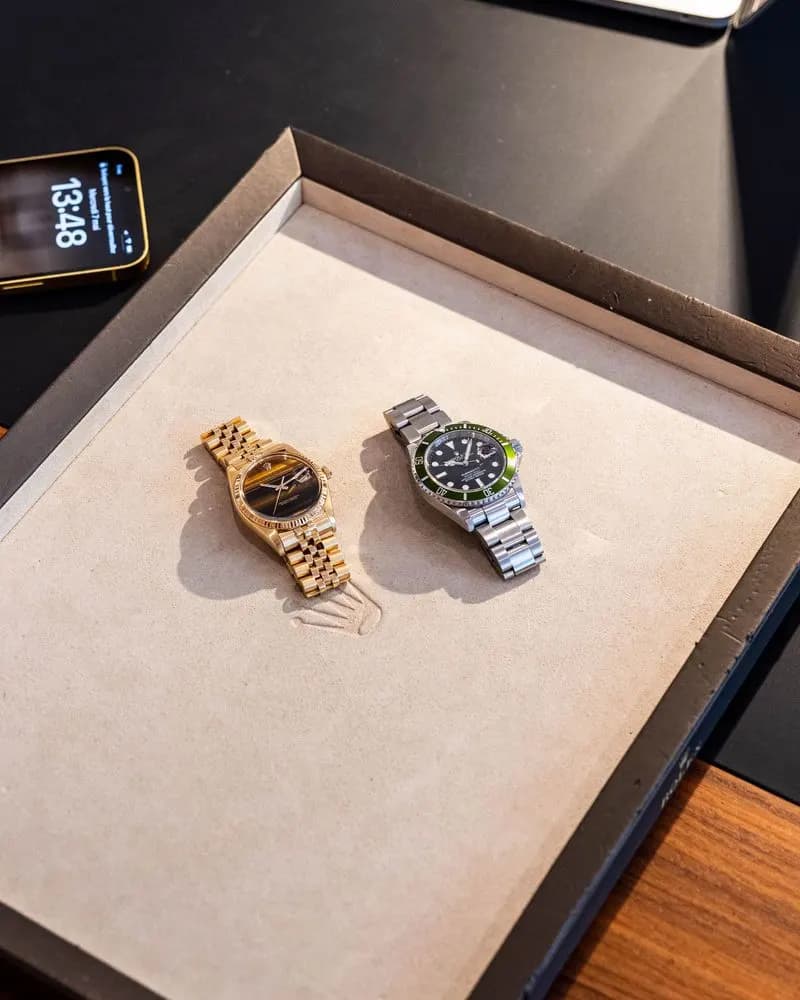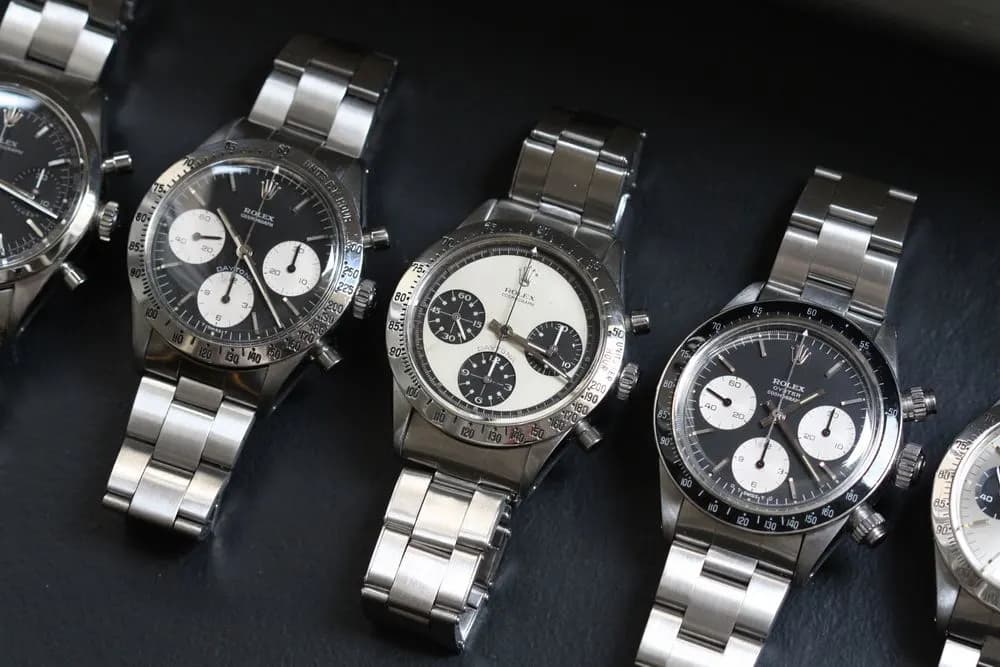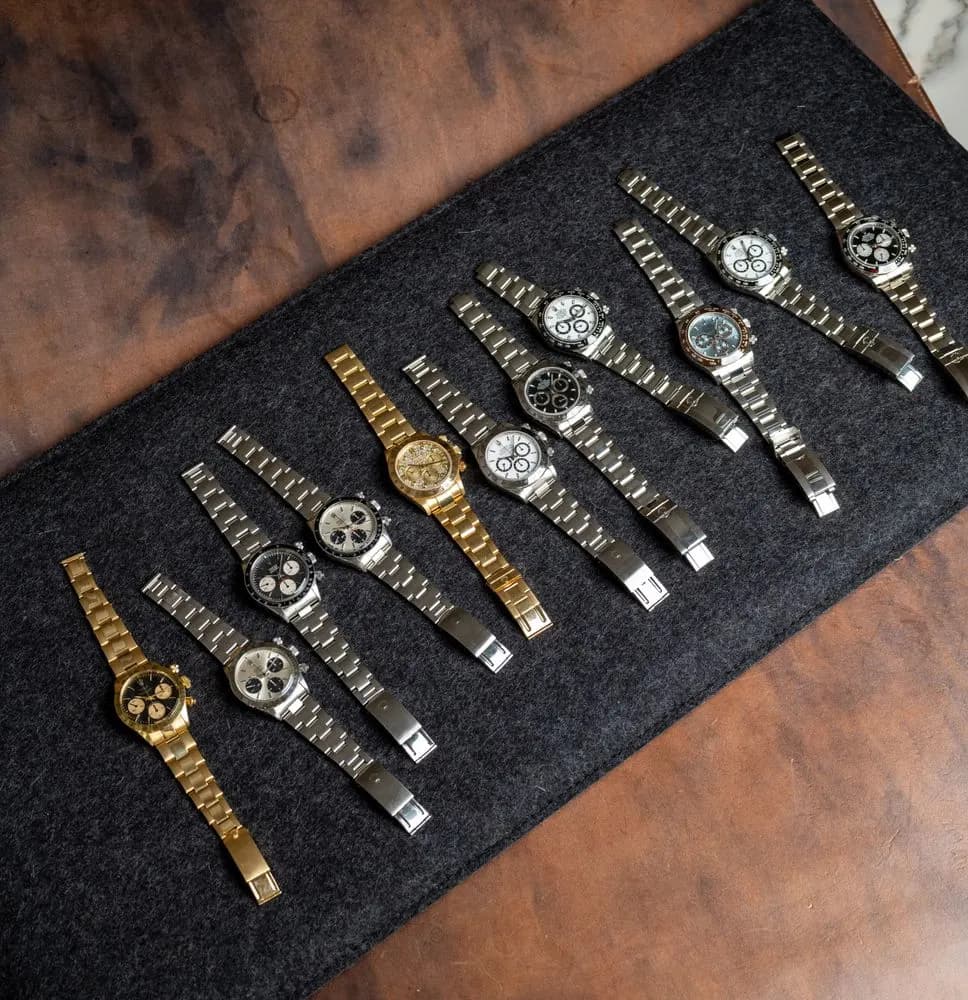Introduced in 1971, reference 6265 was produced until 1987, along with reference 6263. Both versions were available in steel, 14 ct gold, and 18 ct gold. The main difference between these two models lies in the bezel: polished steel for the 6265 and steel/bakelite for the 6263. These two references are among the longest-lasting in the Daytona family.
Starting with these two references, Rolex equipped all its chronographs with screw-down pushers, without exception. The screw-down pusher was developed on the brand's 6240 model and, after proving its effectiveness from 1965 to 1969, Rolex produced three different versions, each offering improved waterproofing capabilities.
This article focuses on understanding the primary characteristics of the 6265, point by point:
- Screw-down pushers
- The bezel
- The dials
- The BIG RED
- The movement
Screw-Down Pushers
For clarity, we will refer to these three pushers as "First Generation," "Second Generation," and "Third Generation." This terminology avoids confusion caused by various naming conventions across different sources. For instance, the First Generation, often considered more of a prototype, may be referred to as "Millerighe" (a name given by Italian collectors), "MK0," or "MK1." What matters is the production order and differences between these pushers.

Illustration of a First Generation Pusher

Illustration of a Second Generation Pusher

Illustration of a Third Generation Pusher
The differences:
- Smooth, thin grooves; rhodium-plated brass piece.
- Thicker grooves and smooth pusher buttons.
- Thicker grooves and buttons with two recessed rings, one at the base and one at the top.
The Bezel
The Cosmograph 6265 is equipped with a tachymeter bezel graduated from 50 to 200 units. Four known bezel variations have been categorized chronologically by collectors:

Illustration of the Different Bezels
Bezel No. 4 is considered a "service" bezel, used as a replacement by Rolex during maintenance when the original bezel was too worn. It is easily distinguishable as its "7" features only two bars, lacking the small descending bar on the left. Differences among the other three bezels include:
Bezel No. 1: Dot below "190"
Bezel No. 2: Dot aligned with the first third of the "1" in "190"; vertical bar of "P" in "PER" centered between "H" and "U" in "HOUR"
Bezel No. 3: Dot aligned with the first third of the "1" in "190"; vertical bar of "P" in "PER" aligned with the vertical bar of "R" in "HOUR."
Exact production dates for Bezels No. 2 and 3 remain unconfirmed. Bezel No. 1 was likely produced until the late 1970s, while the other two were used until the end of this reference's production.
The Dials
During its 16 years of production, the Rolex Daytona 6265 featured various dials with differences in color and markings:
- Sigma T SWISS T
- T SWISS T without Daytona marking
- T SWISS T "Big Red" (DAYTONA printed in red above the lower subdial)
- T SWISS T "Floating Big Red" (DAYTONA printed in red, higher above the subdial)
- Sigma T SWISS T "COSMOGRAPH" (COSMOGRAPH printed above the lower subdial, gold models only)
- "Paul Newman" dial (black with white subdials)
- "Panda" dial (white with black subdials)
- Service dials (replacement tritium Small Red or Luminova dials)

Details about dial features:
- T SWISS T: Swiss-manufactured dial with tritium luminescent markers.
- COSMOGRAPH: Name used by Rolex from 1953 for moon phase models, later retained for the Daytona collection.
- DAYTONA: Introduced in 1965, inspired by Rolex's sponsorship of the Daytona race.
- SIGMA: Denotes gold quality used in dials during the 1970s.
- PAUL NEWMAN: Named after the actor known for wearing this special dial type.
- PANDA: Describes white dials with black subdials.
The 6265 BIG RED Overview
The "Big Red" refers to dials with the word DAYTONA printed in red above the lower subdial. The term "BIG" was added to differentiate it from service dials with smaller text. Variants include light or dark backgrounds with contrasting subdials, exhibiting unique hues over time.

The steel bezel of the 6265 balances the earlier chronographs and the modern Daytona design.
The Movement 727
The Valjoux 72 base movement, enhanced by Rolex, operates at 21,600 vibrations per hour, providing improved precision and durability. Proper maintenance is crucial to ensure its longevity.

Wearing Experience
The 6265 offers comfort and readability with lightweight construction and well-proportioned design. Its legible tachymeter bezel and accessible pushers enhance usability, making it both a functional and aesthetically pleasing timepiece.
Future Prospects
The 6265 has seen consistent value growth over the past three decades, making it a coveted item for collectors. Its rarity and impeccable design ensure its place as a lasting icon in vintage horology.














